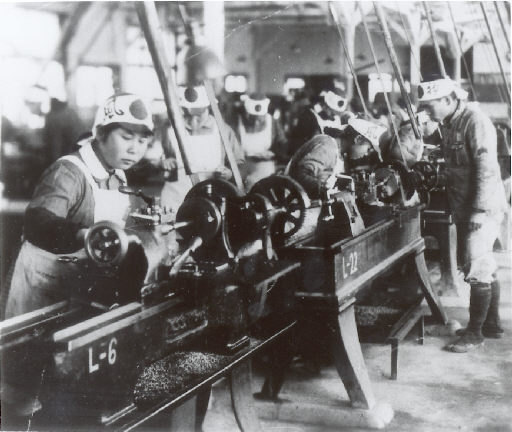
 Episodes - Desperate War of Japan in the Pacific -
Reports
aboutMe
Episodes - Desperate War of Japan in the Pacific -
Reports
aboutMe
| Designation | Armament | Power[HP] | Weight[kg] | Power/Weight | Year | Production |
| I-16 | 7.6mmx4 | 1,100 | 2,059 | 0.53hp/kg | 1934-42 | 7,000 |
| Yak-7 | 20mmx1 12.7x2 | 1,210 | 3,005 | 0.40hp/kg | 1942 | 6,400 |
| La-5 | 20mmx2 | 1,700 | 3,360 | 0.51hp/kg | 1942-44 | 9,900 |
| Yak-9 | 20mmx1 12.7x2 | 1,360 | 3,082 | 0.44hp/kg | 1943-46 | 3,058 |
| Yak-3 | 20mmx1 12.7x2 | 1,290 | 2,967 | 0.43hp/kg | 1944-45 | 4,797 |
| La-7 | 20mmx3 | 1,850 | 3,240 | 0.57hp/kg | 1944-45 | 7,500 |
| Ki-27 | 7.7mmx2 | 650 | 1,790 | 0.36hp/kg | 1938-41 | 3,386 |
| Ki-43 | 12.7mmx2 | 1,150 | 2,642 | 0.44hp/kg | 1941-44 | 5,751 |
| Ki-44 | 12.7mmx2 7.7x2 | 1,250 | 2,571 | 0.49hp/kg | 1942-44 | 1,200 |
| Ki-84 | 20mmx2 12.7x2 | 1,860 | 3,750 | 0.50hp/kg | 1944-45 | 3,500 |
| Ki-100 | 20mmx2 12.7x2 | 1,350 | 3,495 | 0.38hp/kg | 1945 | 393 |
Russia and Japan were underdeveloped with aero industry. I-16 showed its performance to other nations in Spanish Civil War and Nomonhan Incident. IJA lost a lot of pilots in Nomonhan. So next to Ki-27, Ki-43 equipped self sealed oil tank and armor behind pilot. Otherwise IJN did not learn as USN learned the Battle of Britain. So Zero had no sealed fuel tank and armor behind pilot till the end of the Pacific War.
Yak-7 fought Bf109F at first. At last La-5 was competitive in Stalingrad. La-7 and Yak-3 overwhelmed enemy in Berlin. Yak-3 was excellent aero dynamic and designed light. La-7 equipped an air cooled engine, ASh-82FN (1,850hp) and could climb 5,000m in 4min 30sec.
Otherwise Japan failed to product the 1,860hp engine designated Ha-45. Ki-100 exchanged liquid cooled to air cooled radial engine, Mitsubishi
Kinsei-62 too late, as LaGG-3 did well.
Syoumou to hoten
Production of aircraft in US, Germany, UK and Japan and parity
| Aircraft | 3.4 |
| Alminum | 5.4 |
| Shipbuilding | 10.9 |
| Steel | 39.0 |
| Oil | 209.1 |
| Tank | 100.0 |
 |
| Date | US | Japan |
| 1941Dec | 1,692 | 2,625 |
| 1943Jan | 3,537 | 3,200 |
| 1944Jan | 11,442 | 4,050 |
| Year | US | UK | Germany | Japan |
| 1941 | 19,433 | 20,094 | 11,766 | 5,088 |
| 1942 | 47,836 | 23,672 | 15,556 | 8,861 |
| 1944 | 96,318 | 26,461 | 39,807 | 28,180 |
IJA airforce
IJA had 1,800 operational aircraft on 15 September 1943. The force was despersed all around the Pacifice, as followed 36 SQ in domestic, 51 SQ in Manchuria, 24 SQ in China, 71 SQ in the Pacific. IJA 7th Wing Group moved to Buto from Ambon in July 1943, which had 250 aircraft. The 7th Wing Group moved to Ambon in November and its aircraft decreased to 150 in December.
Inspection tour
President Franklin Delano Roosevelt' wartime tour in September and October 1942. A site shows his inspection of Boeing Aircraft Plant Seattle Washington in WW II
[1] NHK1, p32
[2] Morimoto, p205, p215
[3] Ki-45 kai